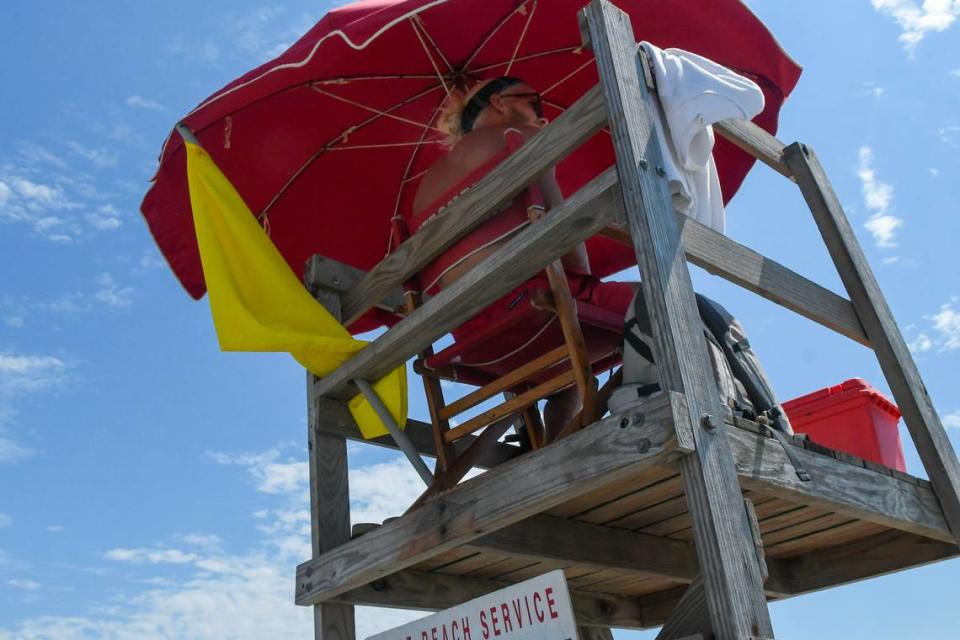What are Hilton Head lifeguards trained to do if there’s a shark sighting or attack?
Beachgoers on Hilton Head Island’s beaches looked like they were swimming a little closer to shore than normal this week, wary of the waters following two recent Florida shark attacks.
Hilton Head Island’s lifeguards are trained to monitor the waters for sharks to prevent bites and attacks, and respond if one does happen, making a trip to the beach safer for islanders and tourists.

Shore Beach Service runs the Hilton Head Island beach patrol. Operations Manager Mike Wagner said that the most common sharks they see are:
Atlantic sharpnose sharks. These sharks are at most four feet long.
Blacktip sharks. These sharks grow up to 6 feet and are known for leaping out of the water while feeding on fish schools.
Bonnethead sharks. These sharks reach a maximum length of 5 feet.
“When the guards see them they don’t necessarily know what type it is because you’re usually seeing it very quickly and not usually super close in,” he said.
Wagner didn’t mention great white sharks. On June 7, a great white shark named Brenton pinged well off the coast of Beaufort County, weighing over 1,400 pounds, according to OCEARCH.
Throughout 2023, there were 36 unprovoked shark bites on humans in the United States, according to the World Animal Foundation. One of those bites was in Hilton Head Island’s Sea Pines’ beach waters in July.
What do lifeguards look for?
In addition to sharks, lifeguards keep their eyes out for signs of their presence such as fish jumping out of the water and birds diving in the area.
“Things like that might show the likelihood of a shark presence is higher,” Wagner said.
If a beachgoer sees these signs, Wagner advises that they tell the lifeguards on the beach.
What do lifeguards do if they see a shark, or activity of a shark?
If lifeguards see a shark or shark activity, beachgoers will see and hear them blowing their whistles to get out of the water. Once the water is cleared, they’ll put up red flags.
Lifeguards will clear the water for half an hour from the last time they see them. If they see them again, “we start the clock again for another half hour,” Wagner said.
When this happens, beachgoers often flock to the water’s edge to see the sharks.
“There’s no problem with going to the water’s edge to look,” Wagner said. “It wouldn’t be wise to go in.”
What do lifeguards do if there is an attack?
Lifeguards are trained to help the person without putting themselves or others in greater danger.
If a shark bite appears to be a typical single hit-and-run type incident and lifeguards deem it safe to enter the water, lifeguards should rescue the victim and treat their wounds, according to the United States Lifesaving Association. Shore Beach Services is a part of the United States Lifesaving Association.
“They need to exercise caution and make sure they’re not creating a bigger situation by getting bitten themselves,” Wagner said.
However, there aren’t any documented cases of rescuers being bitten by a shark while helping an injured swimmer, he said.

